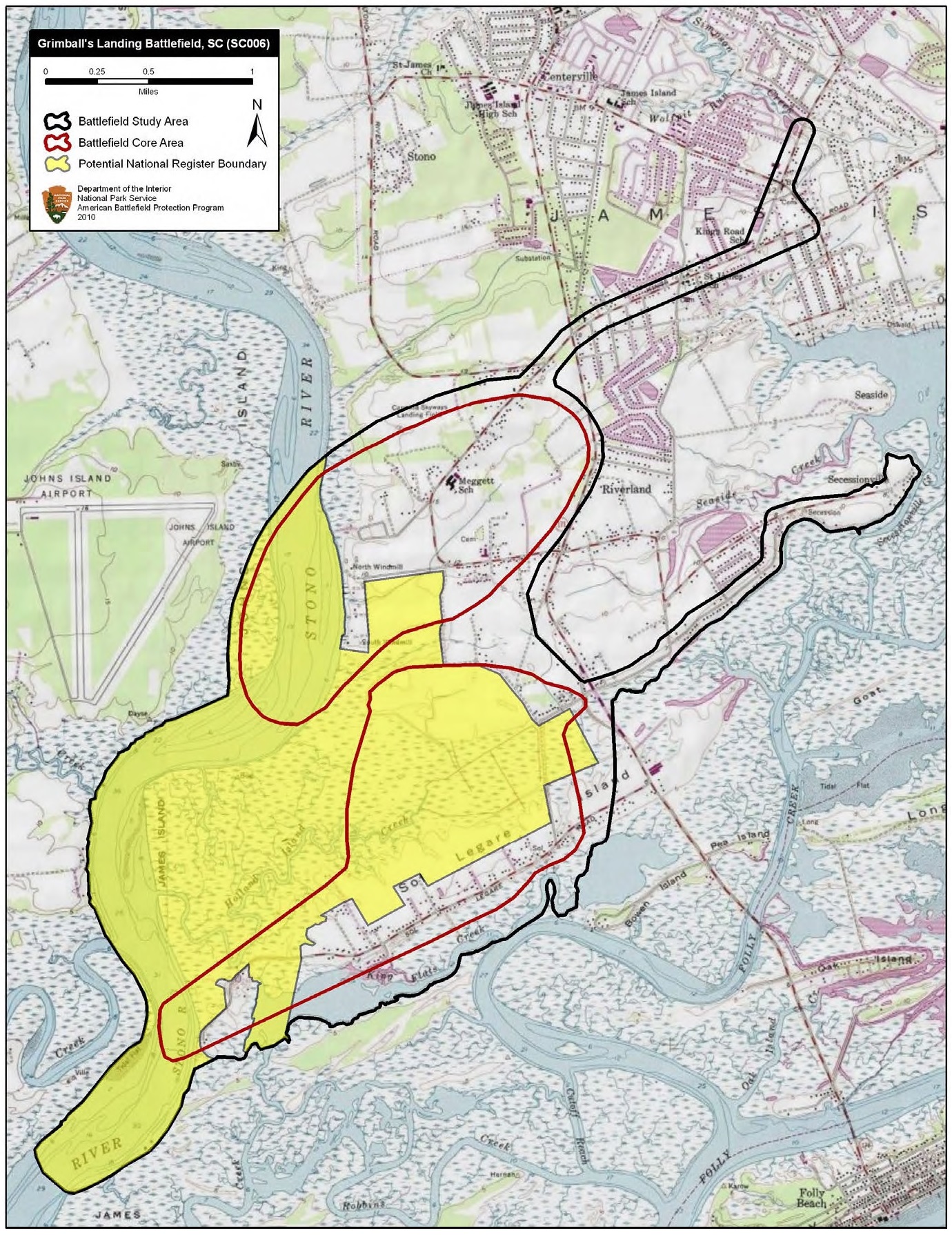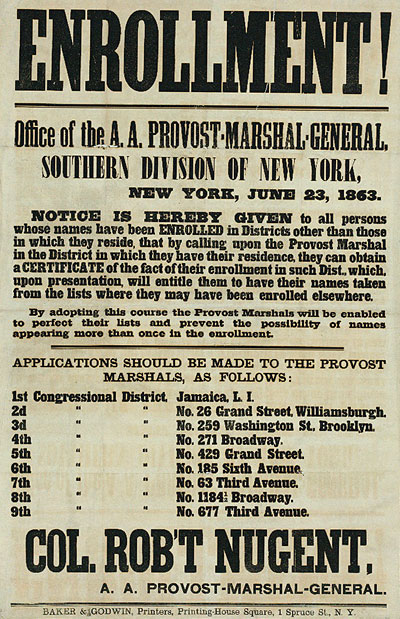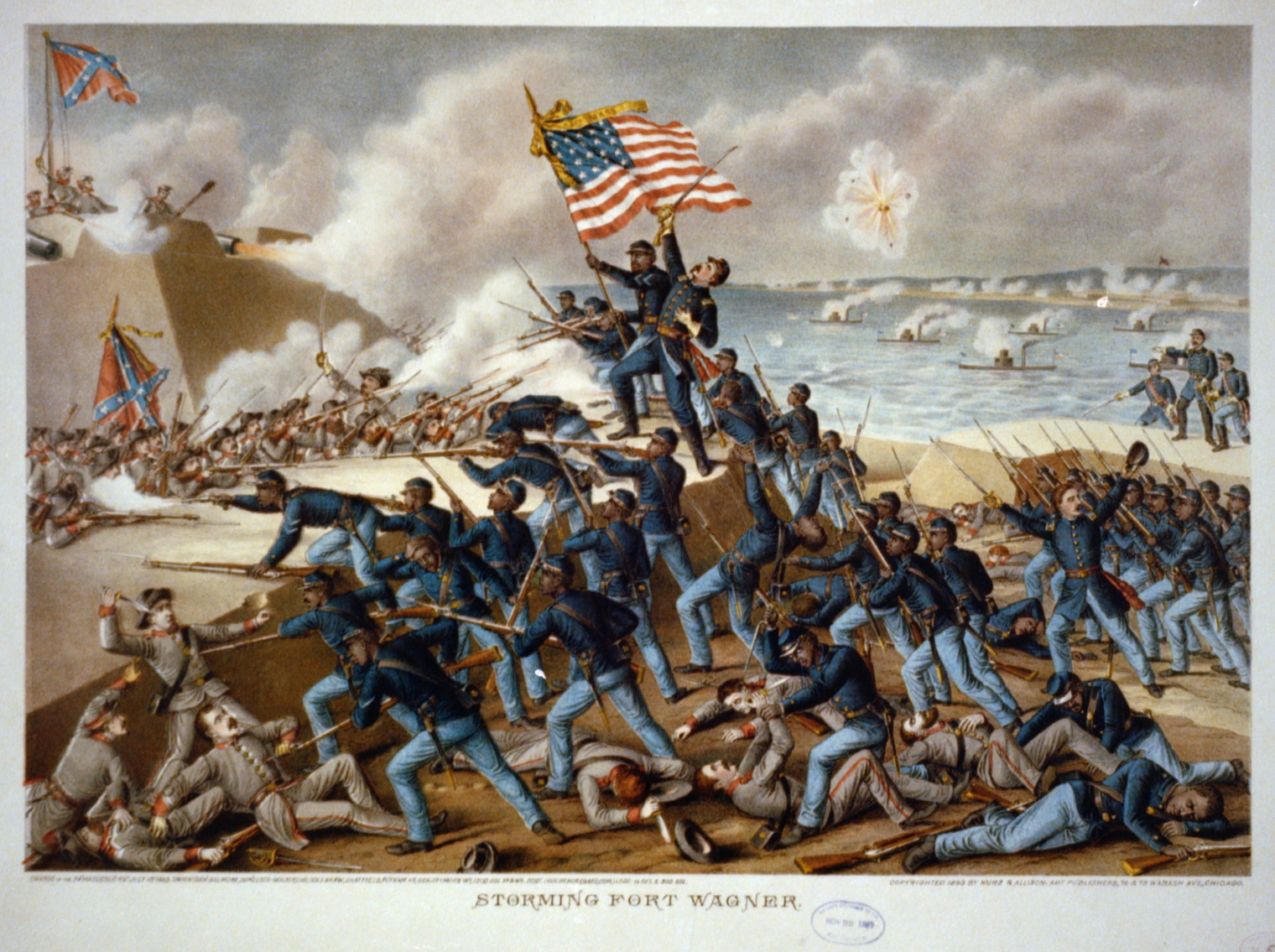|
Battle Of Grimball's Landing
The Battle of Grimball's Landing took place in James Island, South Carolina, on 16 July 1863, during the American Civil War. It was a part of the campaign known as Operations Against the Defenses of Charleston. Opposing forces Union Confederate Battle To draw Confederate forces away from reinforcing Fort Wagner, Brig. Gen. Quincy A. Gillmore designed two feints. One force was sent up Stono River to threaten the Charleston & Savannah Railroad bridge. A second force, consisting of Alfred Terry's division, landed on James Island on 8 July. Soon, Terry demonstrated his forces before the Confederate defenses but did not launch an attack. On 11 July Gillmore made his move on Fort Wagner. The attack was made by the 7th Connecticut Infantry. Supported by a heavy naval bombardment, the assault jumped off at dawn, moving forward through a thick morning fog which helped to conceal their advance. The attackers were met with stiff resistance and were forced back with heavy los ... [...More Info...] [...Related Items...] OR: [Wikipedia] [Google] [Baidu] |
American Civil War
The American Civil War (April 12, 1861 – May 26, 1865; also known by other names) was a civil war in the United States. It was fought between the Union ("the North") and the Confederacy ("the South"), the latter formed by states that had seceded. The central cause of the war was the dispute over whether slavery would be permitted to expand into the western territories, leading to more slave states, or be prevented from doing so, which was widely believed would place slavery on a course of ultimate extinction. Decades of political controversy over slavery were brought to a head by the victory in the 1860 U.S. presidential election of Abraham Lincoln, who opposed slavery's expansion into the west. An initial seven southern slave states responded to Lincoln's victory by seceding from the United States and, in 1861, forming the Confederacy. The Confederacy seized U.S. forts and other federal assets within their borders. Led by Confederate President Jefferson Da ... [...More Info...] [...Related Items...] OR: [Wikipedia] [Google] [Baidu] |
Division (military)
A division is a large military unit or formation, usually consisting of between 6,000 and 25,000 soldiers. In most armies, a division is composed of several regiments or brigades; in turn, several divisions typically make up a corps. Historically, the division has been the default combined arms unit capable of independent operations. Smaller combined arms units, such as the American regimental combat team (RCT) during World War II, were used when conditions favored them. In recent times, modern Western militaries have begun adopting the smaller brigade combat team (similar to the RCT) as the default combined arms unit, with the division they belong to being less important. While the focus of this article is on army divisions, in naval usage " division" has a completely different meaning, referring to either an administrative/functional sub-unit of a department (e.g., fire control division of the weapons department) aboard naval and coast guard ships, shore commands, and in ... [...More Info...] [...Related Items...] OR: [Wikipedia] [Google] [Baidu] |
Battles Of The Lower Seaboard Theater And Gulf Approach Of The American Civil War
A battle is an occurrence of combat in warfare between opposing military units of any number or size. A war usually consists of multiple battles. In general, a battle is a military engagement that is well defined in duration, area, and force commitment. An engagement with only limited commitment between the forces and without decisive results is sometimes called a skirmish. The word "battle" can also be used infrequently to refer to an entire operational campaign, although this usage greatly diverges from its conventional or customary meaning. Generally, the word "battle" is used for such campaigns if referring to a protracted combat encounter in which either one or both of the combatants had the same methods, resources, and strategic objectives throughout the encounter. Some prominent examples of this would be the Battle of the Atlantic, Battle of Britain, and Battle of Stalingrad, all in World War II. Wars and military campaigns are guided by military strategy, whereas ba ... [...More Info...] [...Related Items...] OR: [Wikipedia] [Google] [Baidu] |
Battle Of Grimball's Causeway
The Battle of James Island (also known as the Skirmish at James Island) was a minor skirmish near the end of the American Civil War. It was known as the "Last fight for Charleston". Background Since the fall of Morris Island in 1863 no major offensive had been carried out against Charleston. Several small skirmishes and expeditions were carried out against James Island and Johns Island. On February 10, 1865, Union troops from the Northern District of the Department of the South under Brigadier General Alexander Schimmelfennig made one final expedition to James Island. Confederate Major Edward Manigault of the South Carolina Siege Train (Manigault's Battalion) commanded a small force manning rifle pits on the southern edge of James Island at Grimball's Causeway. Battle Early on the morning of February 10, four Union gunboats shelled the Confederate rifle pits while General Schimmelfennig's troops began their landing. The 144th New York Infantry led the main attack against the ... [...More Info...] [...Related Items...] OR: [Wikipedia] [Google] [Baidu] |
Battle Of Secessionville
The Battle of Secessionville (or the First Battle of James Island) was fought on June 16, 1862, during the American Civil War. Confederate forces defeated the Union's only attempt to capture Charleston, South Carolina, by land. It's noted for the court martial of the Union Brig. Gen. Henry Benham for trying to take James Island, which was against the orders given. ''American Civil War Society (UK)'' Prelude The importance of Charleston to the Confederate cause, after the Union implemented their , can be summarized in the words of Gen. Robert E. Lee, "The loss of Charleston would cut us off almost entirely from communications with the r ...[...More Info...] [...Related Items...] OR: [Wikipedia] [Google] [Baidu] |
New York City Draft Riots
The New York City draft riots (July 13–16, 1863), sometimes referred to as the Manhattan draft riots and known at the time as Draft Week, were violent disturbances in Lower Manhattan, widely regarded as the culmination of white working-class discontent with new laws passed by Congress that year to draft men to fight in the ongoing American Civil War. The riots remain the largest civil and most racially charged urban disturbance in American history. (updated ed. 2014, ). According to Toby Joyce, the riot represented a "civil war" inside the Irish Catholic community, in that "mostly Irish American rioters confronted police, hilesoldiers, and pro-war politicians ... were also to a considerable extent from the local Irish immigrant community." President Abraham Lincoln diverted several regiments of militia and volunteer troops after the Battle of Gettysburg to control the city. The rioters were overwhelmingly Irish working-class men who did not want to fight in the Civil ... [...More Info...] [...Related Items...] OR: [Wikipedia] [Google] [Baidu] |
Folly Island
Folly Island is a barrier island in the Atlantic Ocean near Charleston, South Carolina. It is one of the Sea Islands and is within the boundaries of Charleston County, South Carolina. During the American Civil War, the island served as a major staging area for troops of the Union Army that were attacking Confederate forces in the Charleston region. The largest settlement on Folly Island is Folly Beach. Demographics History The name Folly comes from an Old English term meaning "dense foliage." When Europeans first landed on the island in the early 1600s, they discovered a Native American tribe called the Bohickets. It is unclear what happened to them after the land was deeded to William Rivers in 1696. Pirates were known to sail along the South Carolina coast and the many inlets, sounds, bays formed by barrier islands and sea islands like Folly Island. Two of the most memorable were Edward Teach, known as Black Beard, and Stede Bonnet. For a time, Folly Island was known as ... [...More Info...] [...Related Items...] OR: [Wikipedia] [Google] [Baidu] |
British Army
The British Army is the principal land warfare force of the United Kingdom, a part of the British Armed Forces along with the Royal Navy and the Royal Air Force. , the British Army comprises 79,380 regular full-time personnel, 4,090 Gurkhas, and 28,330 volunteer reserve personnel. The modern British Army traces back to 1707, with antecedents in the English Army and Scots Army that were created during the Restoration in 1660. The term ''British Army'' was adopted in 1707 after the Acts of Union between England and Scotland. Members of the British Army swear allegiance to the monarch as their commander-in-chief, but the Bill of Rights of 1689 and Claim of Right Act 1689 require parliamentary consent for the Crown to maintain a peacetime standing army. Therefore, Parliament approves the army by passing an Armed Forces Act at least once every five years. The army is administered by the Ministry of Defence and commanded by the Chief of the General Staff. The Brit ... [...More Info...] [...Related Items...] OR: [Wikipedia] [Google] [Baidu] |
Bermuda
) , anthem = "God Save the King" , song_type = National song , song = "Hail to Bermuda" , image_map = , map_caption = , image_map2 = , mapsize2 = , map_caption2 = , subdivision_type = Sovereign state , subdivision_name = , established_title2 = English settlement , established_date2 = 1609 (officially becoming part of the Colony of Virginia in 1612) , official_languages = English , demonym = Bermudian , capital = Hamilton , coordinates = , largest_city = Hamilton , ethnic_groups = , ethnic_groups_year = 2016 , government_type = Parliamentary dependency under a constitutional monarchy , leader_title1 = Monarch , leader_name1 = Charles III , leader_title2 = Governor , leader_name2 = Rena Lalgie , leader_title3 = Premier , leader_name3 = Edward David Burt , legislature = Parliament , upper_house = Senate , lower_house = House of Assembly , area_km2 = 53.2 , area_sq_mi = 20.54 , area_rank = , percent_water = 27 , elevation_max_m = 7 ... [...More Info...] [...Related Items...] OR: [Wikipedia] [Google] [Baidu] |
Robert John Simmons
First Sergeant Robert John Simmons was a Bermudian who served in the 54th Massachusetts Volunteer Infantry Regiment during the American Civil War. He died in August 1863, as a result of wounds received in an attack on Fort Wagner, near Charleston, South Carolina. Biography A former clerk, probably from St. George's, Simmons joined the 54th on March 12, 1863. Many black and white Bermudians fought for the Union, mostly in the US Navy. Other black Bermudians who served in the United States Army during the war included Robert Tappin (who had previously served in the US Navy from 1863 to 1864), John Wilson and Joseph Thomas of the 31st Colored Infantry Regiment, John Thompson of the 26th Colored Infantry, Wate O. Harris, of the 6th Coloured Infantry, and George Smith. The links of the people of Bermuda with the southern states were foundational, with their archipelago having been settled in 1609-1612 by the Virginia Company as an extension of Jamestown, with the Carolinas hav ... [...More Info...] [...Related Items...] OR: [Wikipedia] [Google] [Baidu] |
James Island, South Carolina
James Island is a town in Charleston County, South Carolina, United States. It is located in the central and southern parts of James Island. James Island is included within the Charleston-North Charleston-Summerville metropolitan area and the Charleston-North Charleston Urbanized Area. History Here at James Island on November 14, 1782, Tadeusz Kościuszko, Colonel of the Continental Army, led the last known armed action of the Revolutionary War against the British and was nearly killed. Later, The Continental Congress named Kosciuszko Brigadier General for his service in both the North, including his tremendous assistance to General Gates at The Battle of Saratoga and brilliant efforts assisting General Greene in saving the South Region Army from Cornwallis forces and ultimately severely weakening the British under command of Cornwallis. In the American Civil War, the Battle of Secessionville was fought on James Island. Long settled as a semi-rural area, this island has been ... [...More Info...] [...Related Items...] OR: [Wikipedia] [Google] [Baidu] |
54th Massachusetts Infantry Regiment
The 54th Massachusetts Infantry Regiment was an infantry regiment that saw extensive service in the Union Army during the American Civil War. The unit was the second African-American regiment, following the 1st Kansas Colored Volunteer Infantry Regiment, organized in the northern states during the Civil War. Authorized by the Emancipation Proclamation, the regiment consisted of African-American enlisted men commanded by white officers. The unit began recruiting in February 1863 and trained at Camp Meigs on the outskirts of Boston, Massachusetts. Prominent abolitionists were active in recruitment efforts, including Frederick Douglass, whose two sons were among the first to enlist. Massachusetts Governor John Albion Andrew, who had long pressured the U.S. Department of War to begin recruiting African-Americans, placed a high priority on the formation of the 54th Massachusetts. Andrew appointed Robert Gould Shaw, the son of Boston abolitionists, to command the regiment as Colonel. ... [...More Info...] [...Related Items...] OR: [Wikipedia] [Google] [Baidu] |






